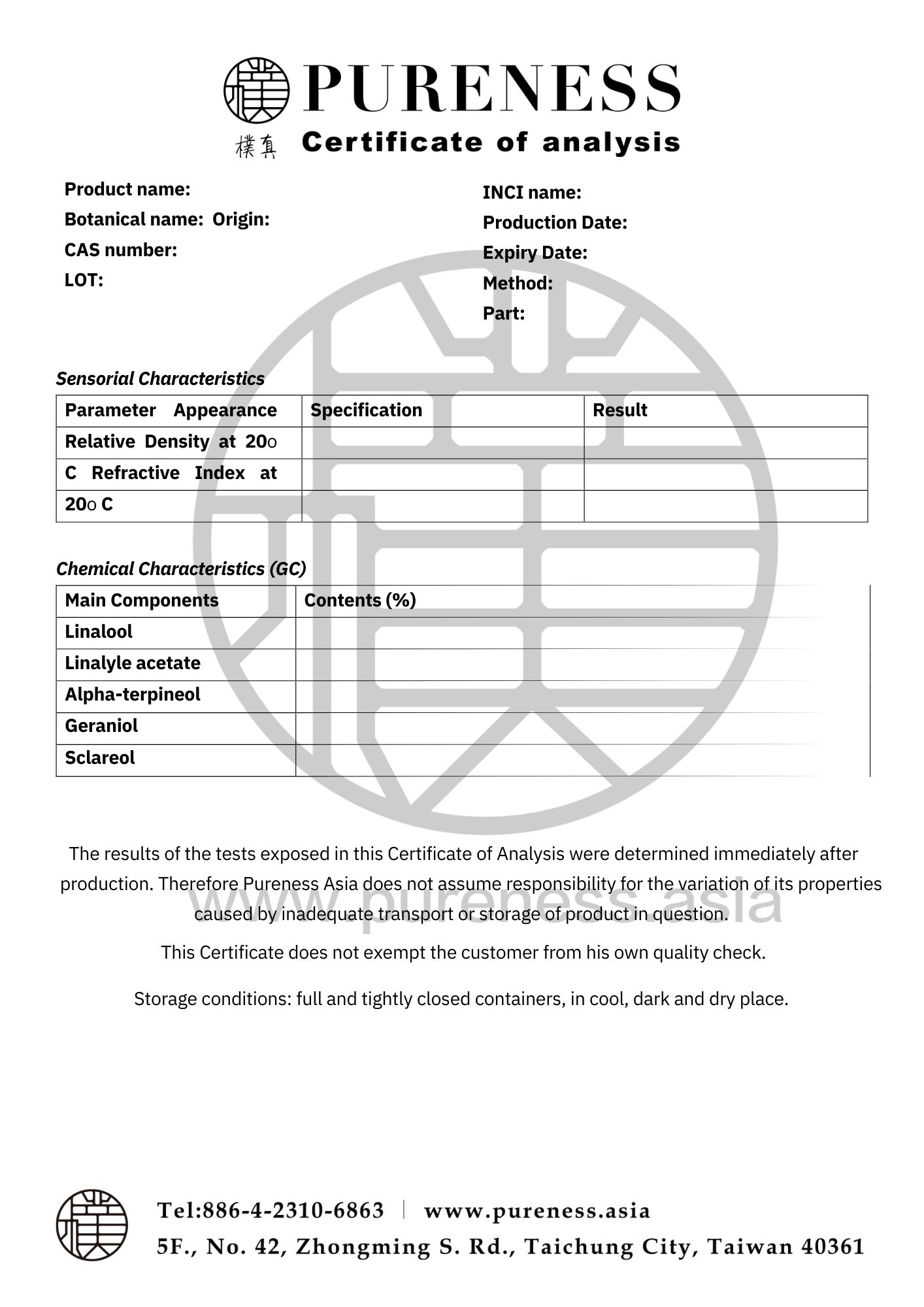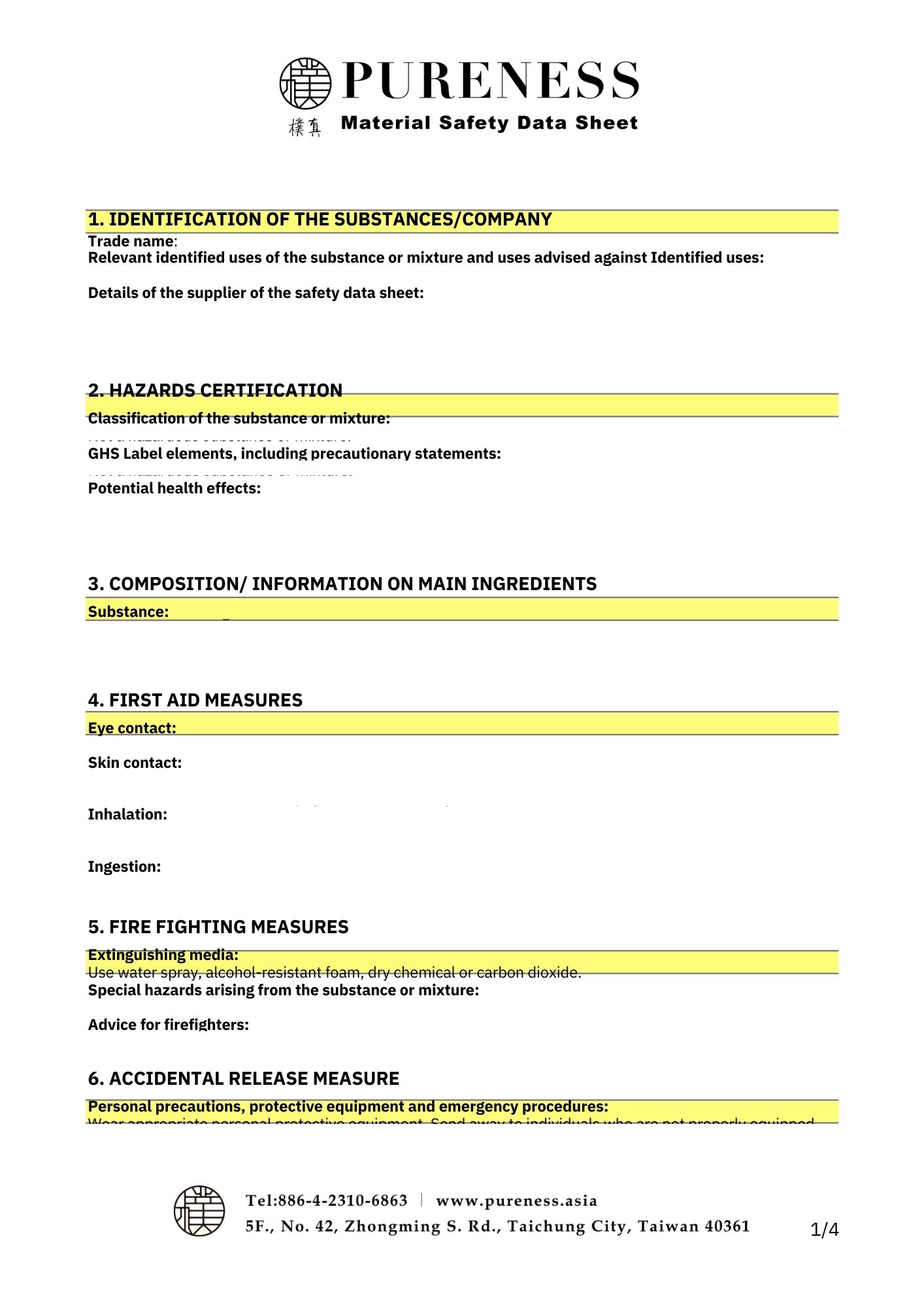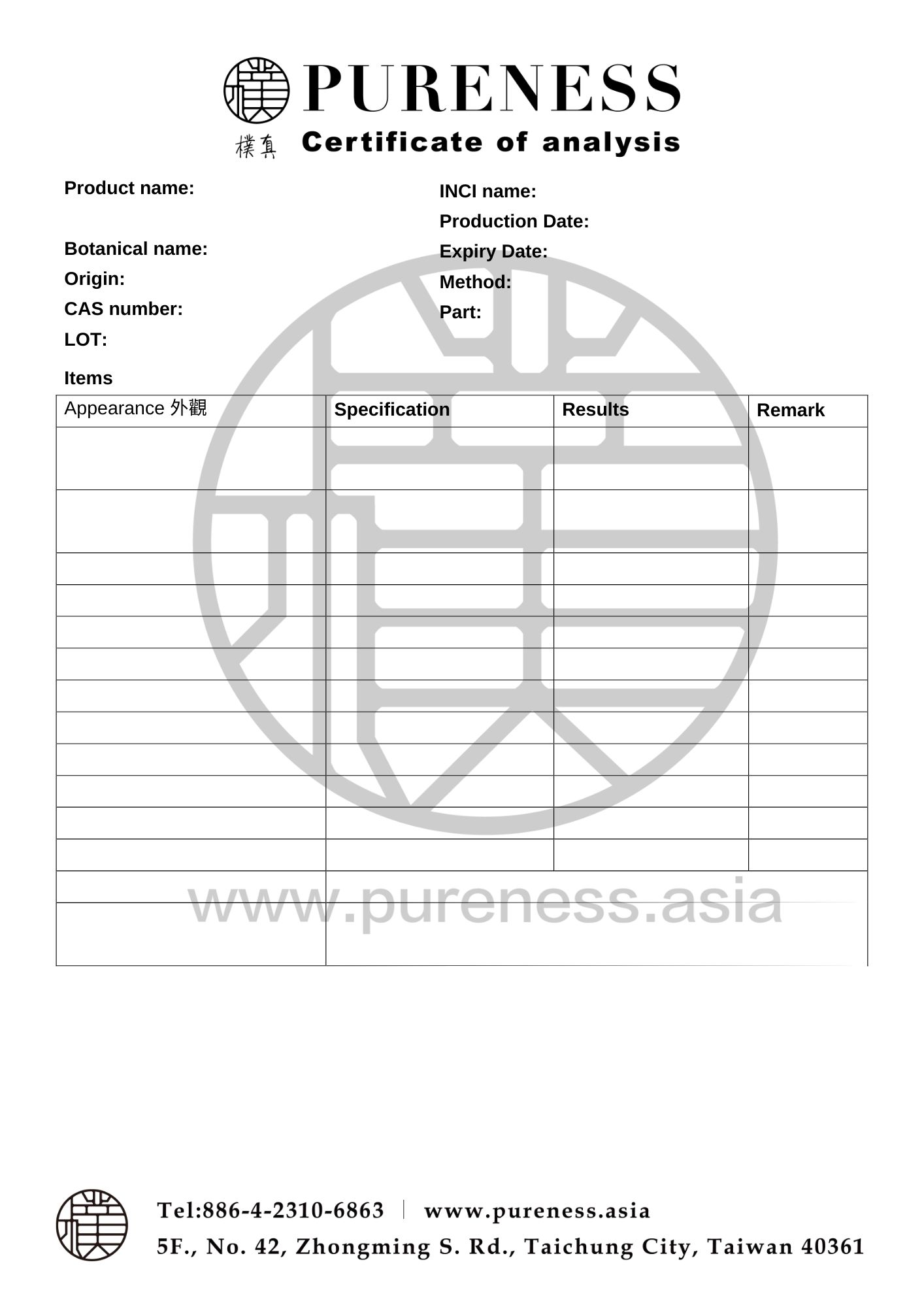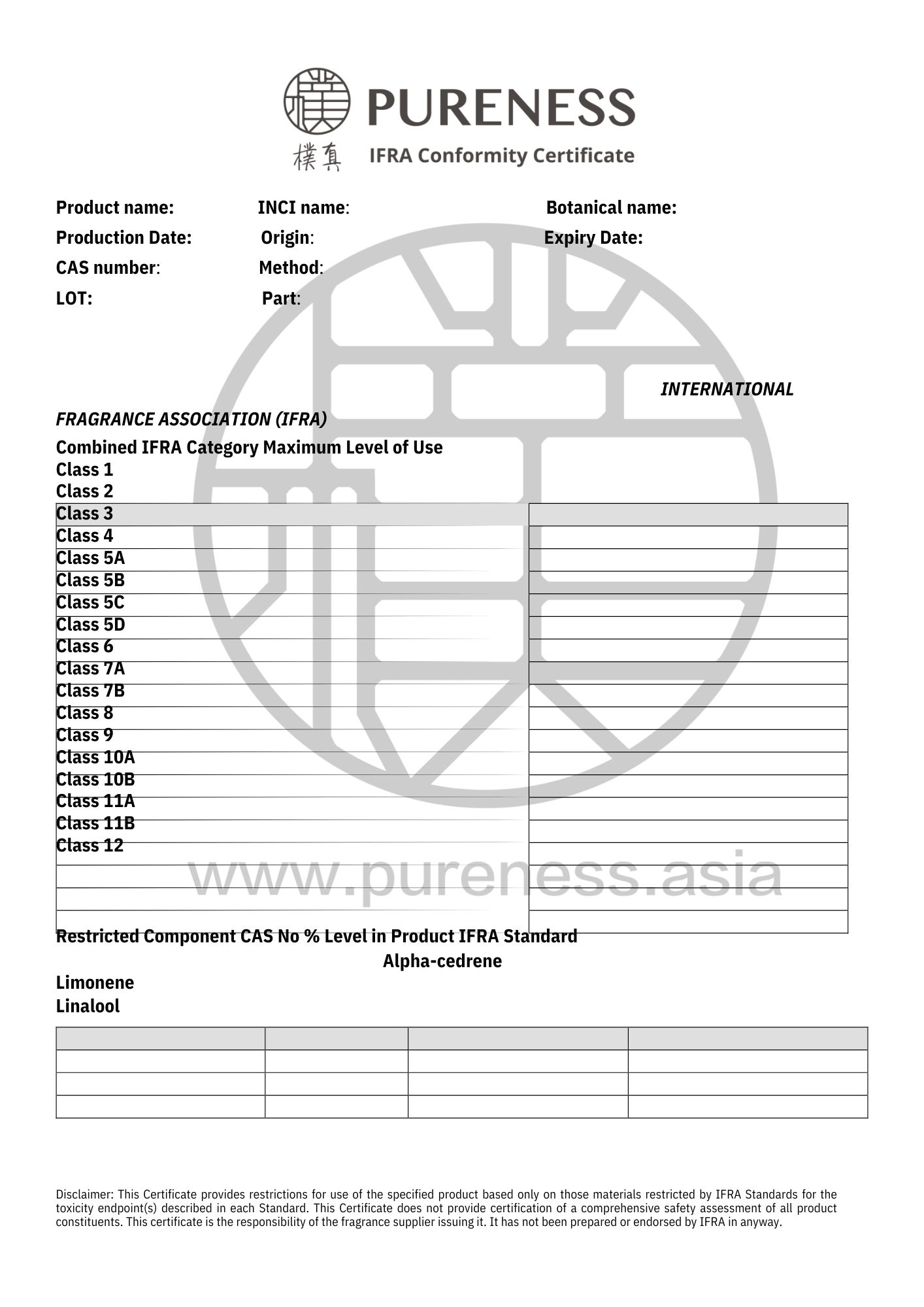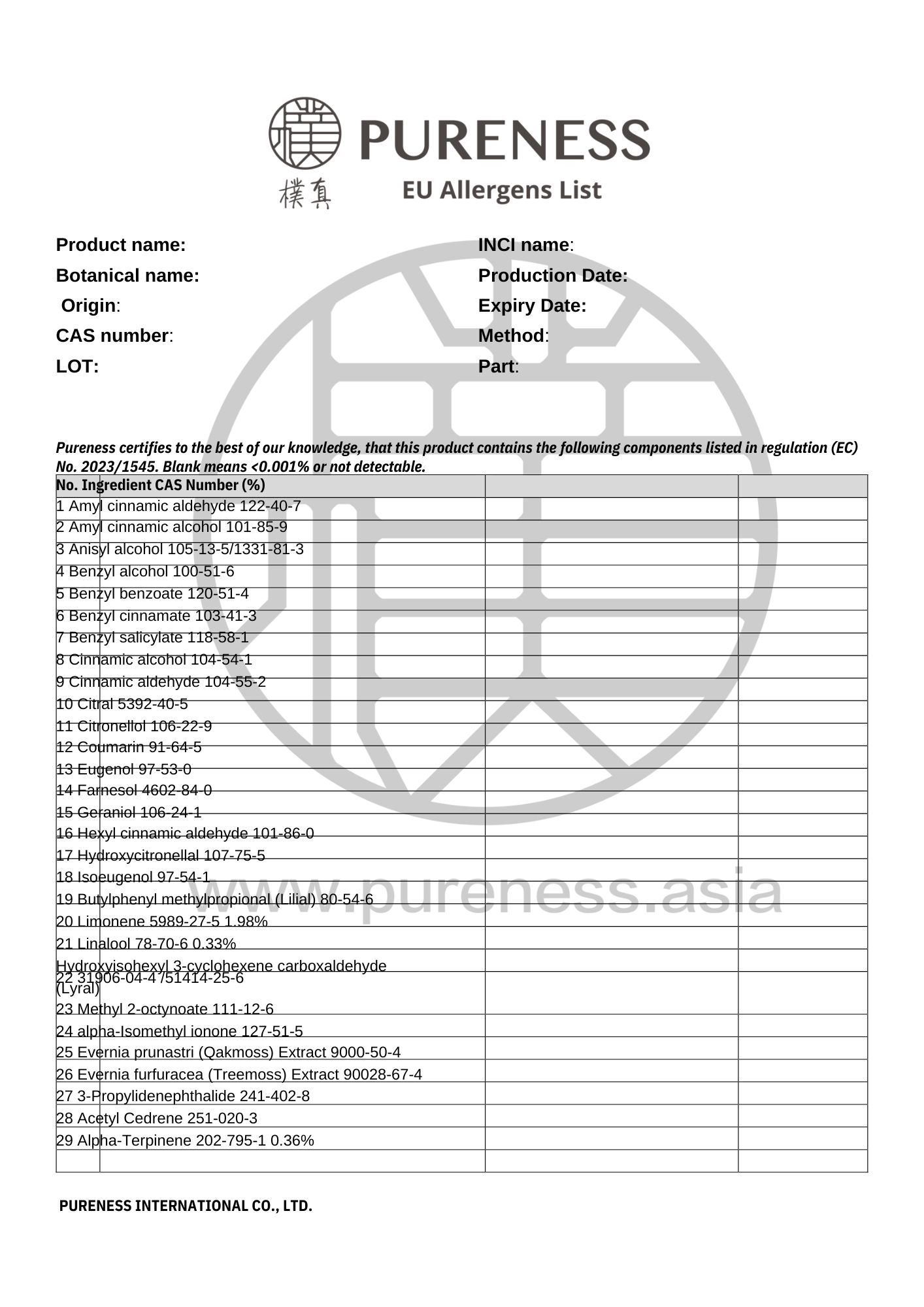
Rosewood
Scientific name|Aniba rosaeodora
Origin|Brazil
Classification|Wood series
Specifications|500g-25kg Please contact sales for details
Extraction part|Wood
Extraction method | Distillation
Plant family|Lauraceae
Aroma|Warm woody scent with a hint of spiciness and a subtle rose fragrance
▎Essential Oil Introduction
Highly preferred from the Brazilian rainforest and the Mysore region in India, the Amazon rainforest is known as the "Lungs of the Earth" and the "Heart of the World." The average temperature in the region ranges from 25 to 28°C, with an annual rainfall of up to 2000 mm. Rosewood trees are native to this region, producing rosewood rich in Linalool, which possesses a delicate and pleasant aroma. Unlike regions with temperature variations, tropical areas like the Amazon rainforest lack annual rings in their plants, and rosewood is one of them, continuously growing into tall trees. It is also commonly used as furniture material, leading to excessive logging of wild rosewood, putting the species at risk. In 1932, the Brazilian government enacted conservation laws that prohibited cutting down plants under 15 years old, making Brazilian rosewood essential oil highly precious.
Due to its similar climate and geographical conditions to the Brazilian rainforest, the Mysore region in India has become an excellent alternative production area for rosewood. Mysore has an annual rainfall of about 600-2000 mm and an average annual temperature between 10 to 35°C. The rosewood produced here also contains abundant Linalool, possessing excellent mild nourishing effects.
Today, rosewood essential oil comes mainly from planned cultivation in Brazil, causing less environmental impact. Rosewood has a rose-red heartwood and a resilient woody aroma with an elegant and pleasant floral fragrance. In English, it is also known as "Rosewood."
▎Component Analysis
|Main Components: Monoterpenols
Obtained through distillation, the main components include Linalool (comprising over 80%), α-Terpineol, Linalyl Acetate (also known as Acetic Acid Linalyl Ester), and other trace elements.
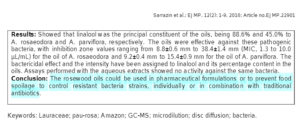
|Component 1: (R)(-)-Linalool
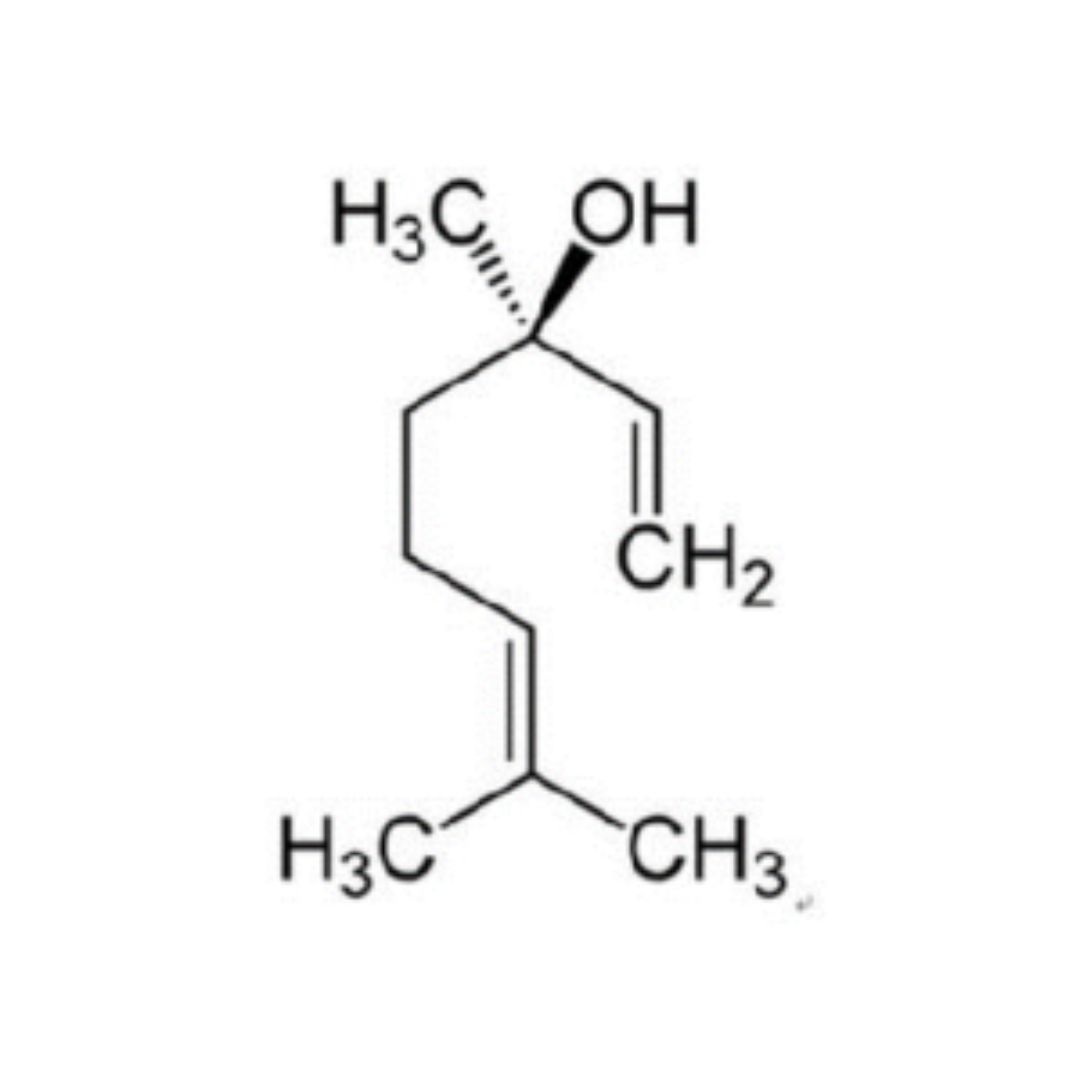
▸ Chemical structure of (R)(-)-Linalool.
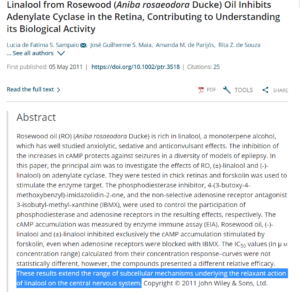
▸ There is research related to the effects of Linalool towards nervous system.
|Component 2: α-Terpineol
α-Terpineol is a colorless, transparent, viscous liquid or low-melting point transparent crystal with a clove-like aroma. The aroma of Terpineol varies greatly depending on the different isomeric components and their content. For example, (R)-(+)-α-Terpineol has a strong lilac aroma, but its isomer (S)-(-)-α-Terpineol has a pine aroma.
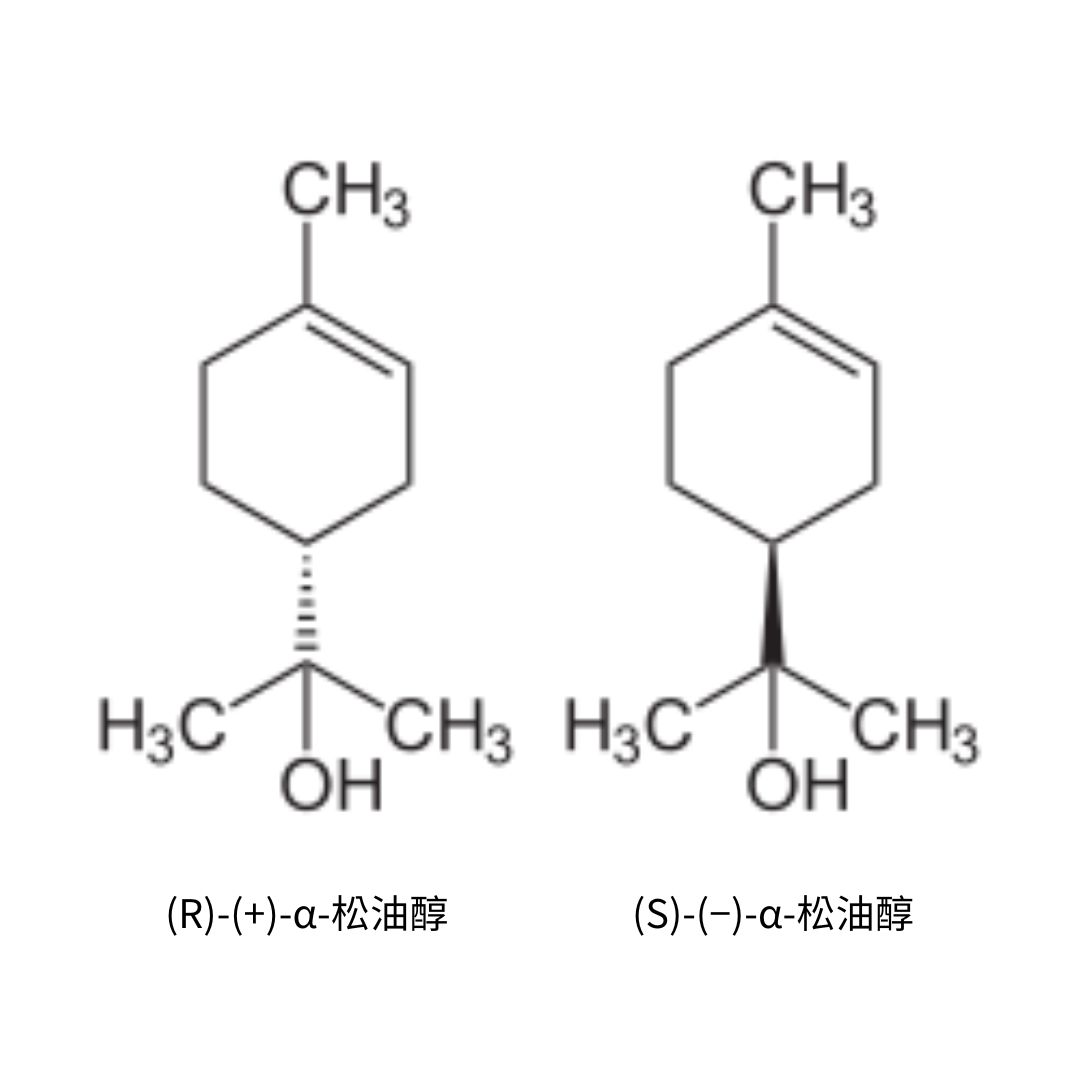
▸ α-Terpineol can be obtained from Nerol or Citronellol through cyclization in an acidic solution and has a lilac aroma. Its derivatives, Linalyl Acetate and Linalyl Propionate, are used in fragrance preparation. Additionally, Terpineol is also used in soap, pesticides, medicine, plastics, telecommunications, and instrument industries, as well as a solvent for coloring glassware.
|Component 3: Linalyl acetate(also known as Acetic Acid Linalyl Ester)
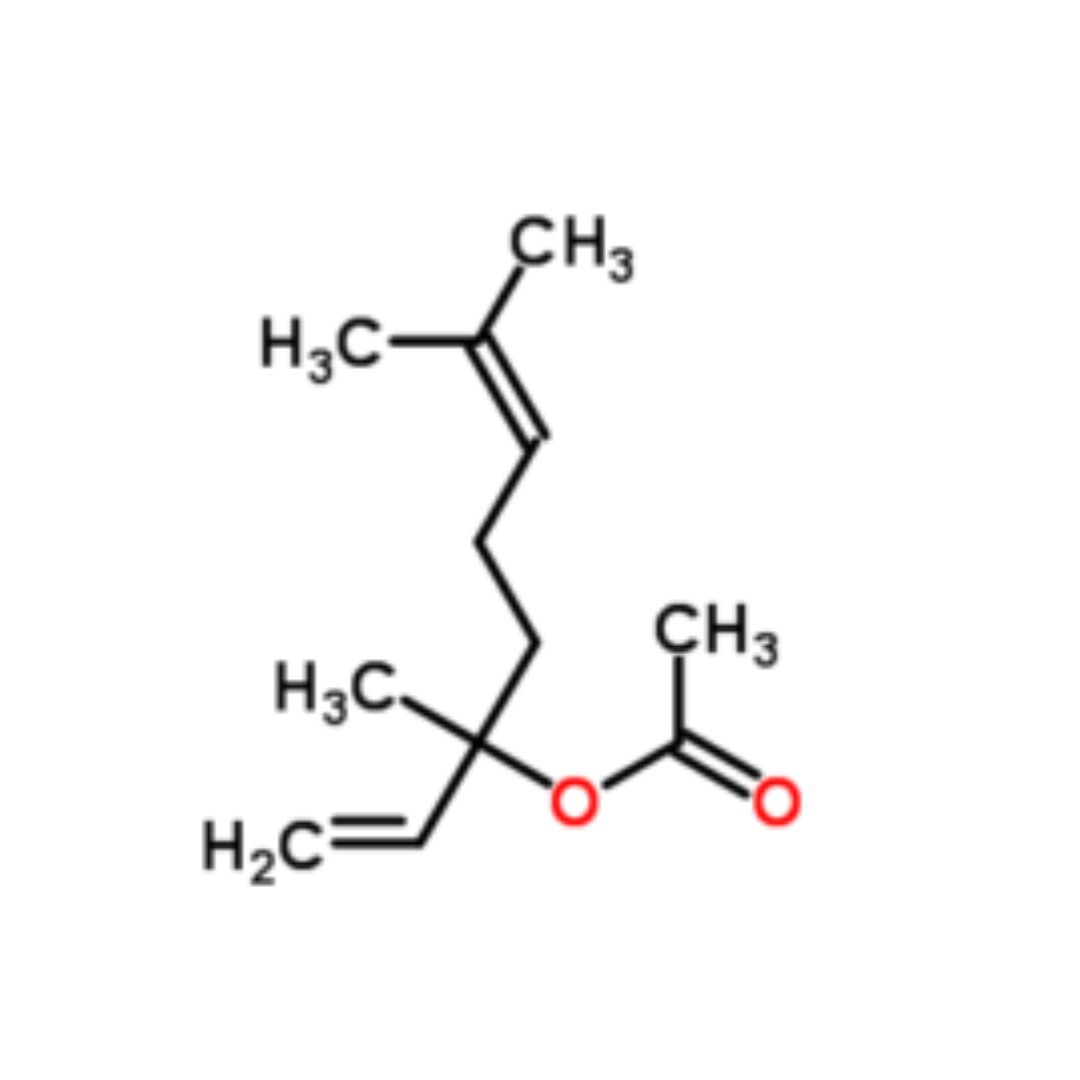
▸ Used in edible flavorings, perfumes, cosmetics, cleaning products, and other fragrances.
▎Raw Material Certifications
To obtain relevant certification information, please contact us on WhatsApp.
▎References
1.Bora H, Kamle M, Mahato DK, Tiwari P, Kumar P.Citrus Essential Oils (CEOs) and Their Applications in Food: An Overview. Plants (Basel). 2020 Mar 11;9(3):357.
2.Lucia de Fatima S. Sampaio, José Guilherme S. Maia, Amanda M. de Parijós, Rita Z. de Souza, Lauro Euclides S. Barata. Linalool from Rosewood (Aniba rosaeodora Ducke) Oil Inhibits Adenylate Cyclase in the Retina, Contributing to Understanding its Biological Activity. Phytotherapy Research,2011,Volume 26, Issue 1 p. 73-77.
3.Pedro MedradoKrainovic, Danilo Roberti Alves de Almeida, Valdir Florêncio da Veiga Junior. Changes in rosewood (Aniba rosaeodora Ducke) essential oil in response to management of commercial plantations in Central Amazonia. Forest Ecology and Management, Volume 429, 1 December 2018, Pages 143-157.
4.Anesthesia of tambaqui Colossoma macropomum (Characiformes: Serrasalmidae) with the essential oils of Aniba rosaeodora and Aniba parviflora and their major compound, linalool. Neotrop. ichthyol. vol.16 no.1 Maringá 2018, Epub Mar 26, 2018.
5.Renah B.Q.Pimentel et al. Variability and antifungal activity of volatile compounds from Aniba rosaeodora Ducke, harvested from Central Amazonia in two different seasons. Industrial Crops and Products. Volume 123, 1 November 2018, Pages 1-9.
6.VolkanKizak et al. Evaluation of anesthetic potential of rosewood (Aniba rosaeodora) oil as a new anesthetic agent for goldfish (Carassius auratus). Aquaculture. Volume 493, 1 August 2018, Pages 296-301
7.Rafael C. Angrizani, Luis A. S. Contim, Maristerra R. Development and characterization of microsatellite markers for the endangered Amazonian tree Aniba rosaeodora (Lauraceae). Applications in Plant Sciences, 2013,Volume 1, Issue 9.
8.Carlos H.V. Fidelis ,Fabio Augusto,Paulo T.B. Sampaio, Pedro M. Krainovic &Lauro E.S. Barata. Chemical characterization of rosewood (Aniba rosaeodora Ducke) leaf essential oil by comprehensive two-dimensional gas chromatography coupled with quadrupole mass spectrometry. Journal of Essential Oil Research, Volume 24, 2012 - Issue 3 Pages 245-251
9.Jérémie Sœur et al. Selective cytotoxicity of Aniba rosaeodora essential oil towards epidermoid cancer cells through induction of apoptosis. Mutation Research/Genetic Toxicology and Environmental Mutagenesis Volume 718, Issues 1–2, 11 January 2011, Pages 24-32.
10. H. Surburg und J. Panten: Common Fragrance and Flavor Materials: preparation, properties, and uses. Wiley-VCH, Weinheim 2006
|Some images sourced from the internet. Contact for copyright removal|
